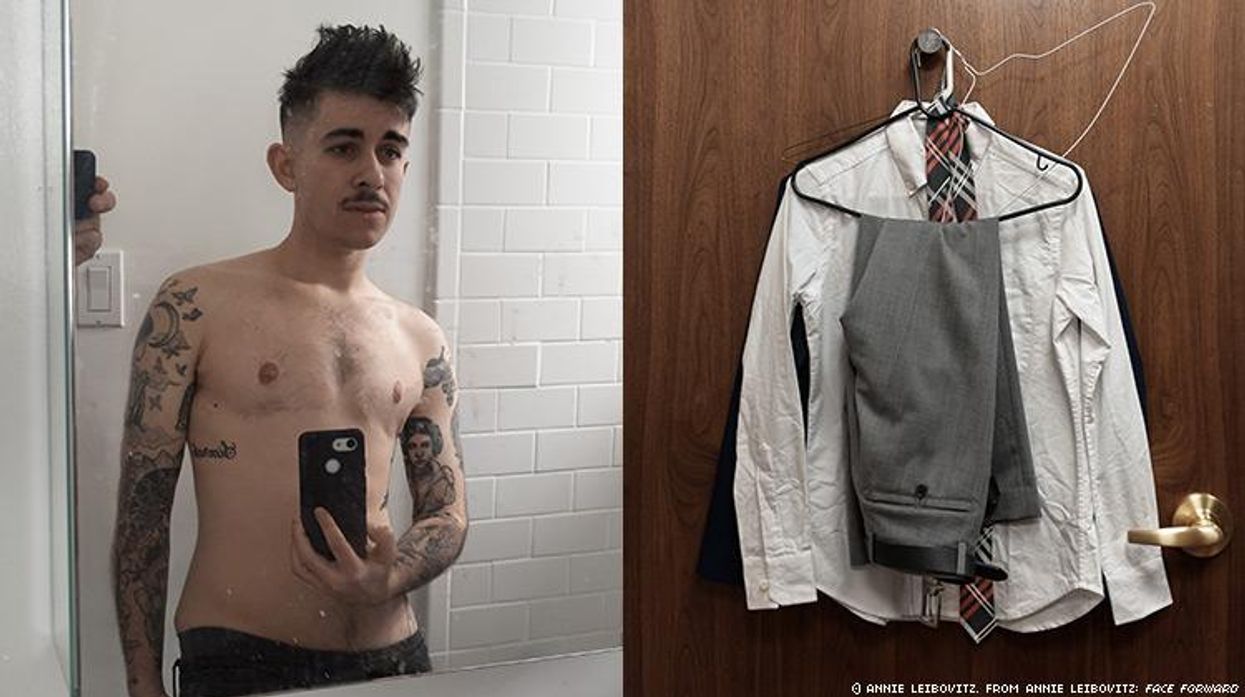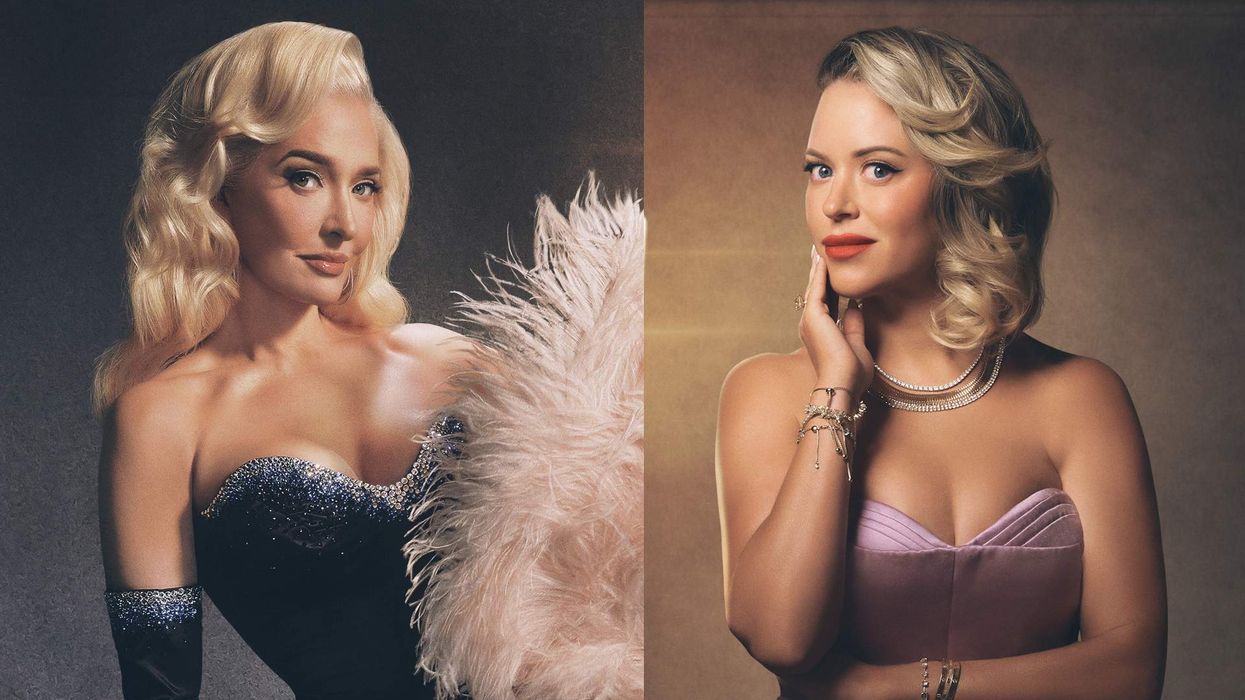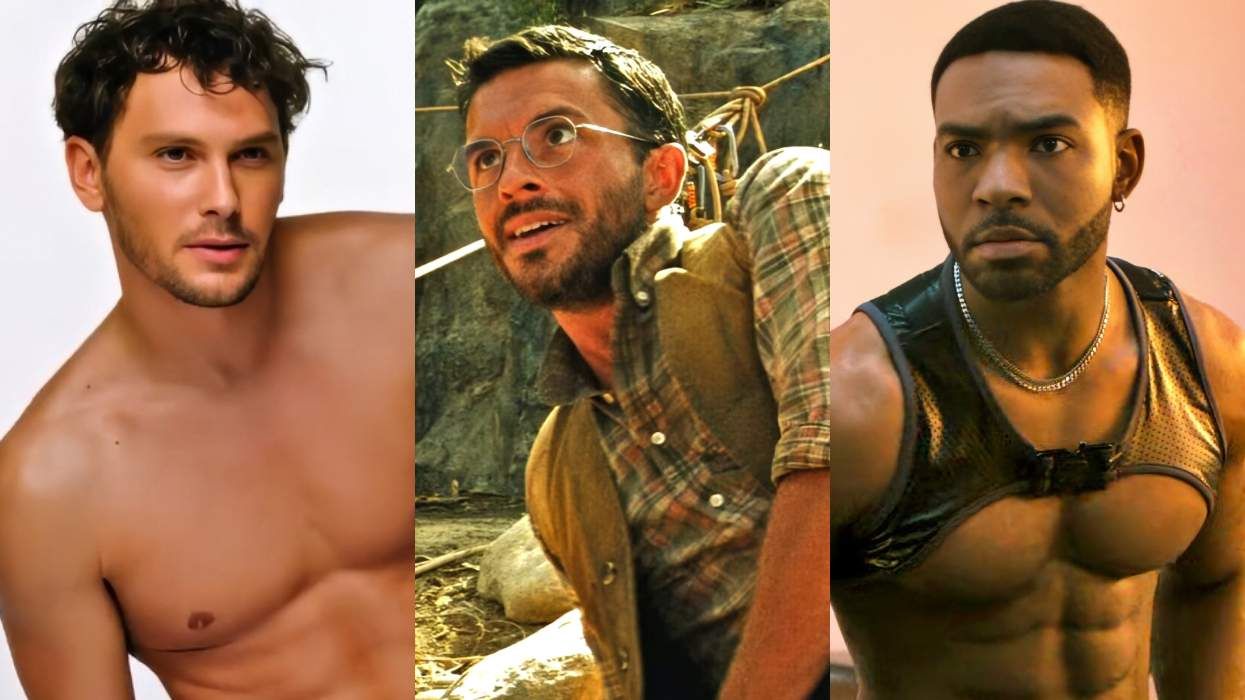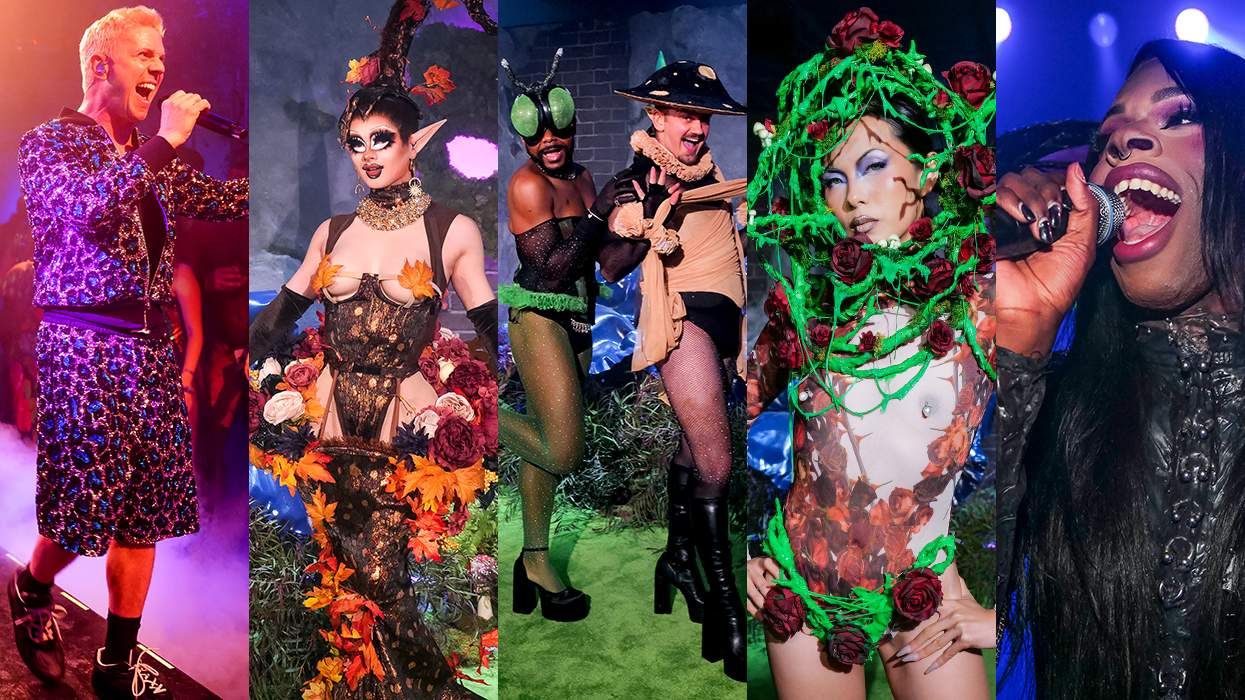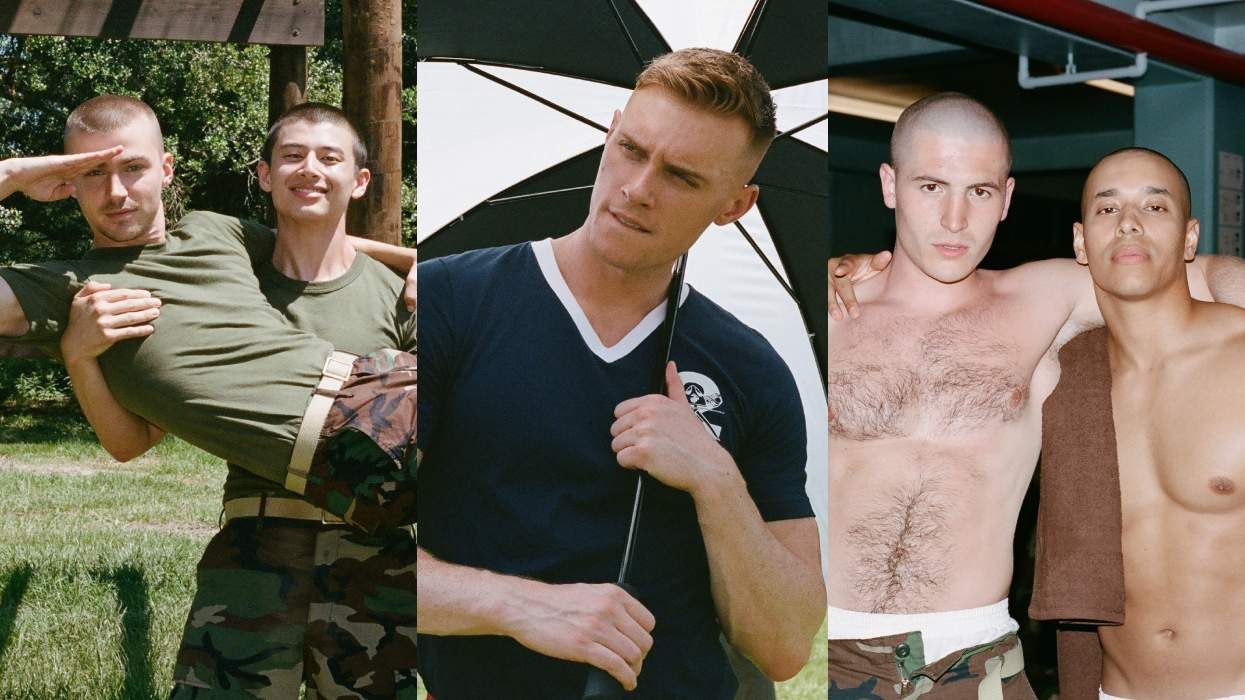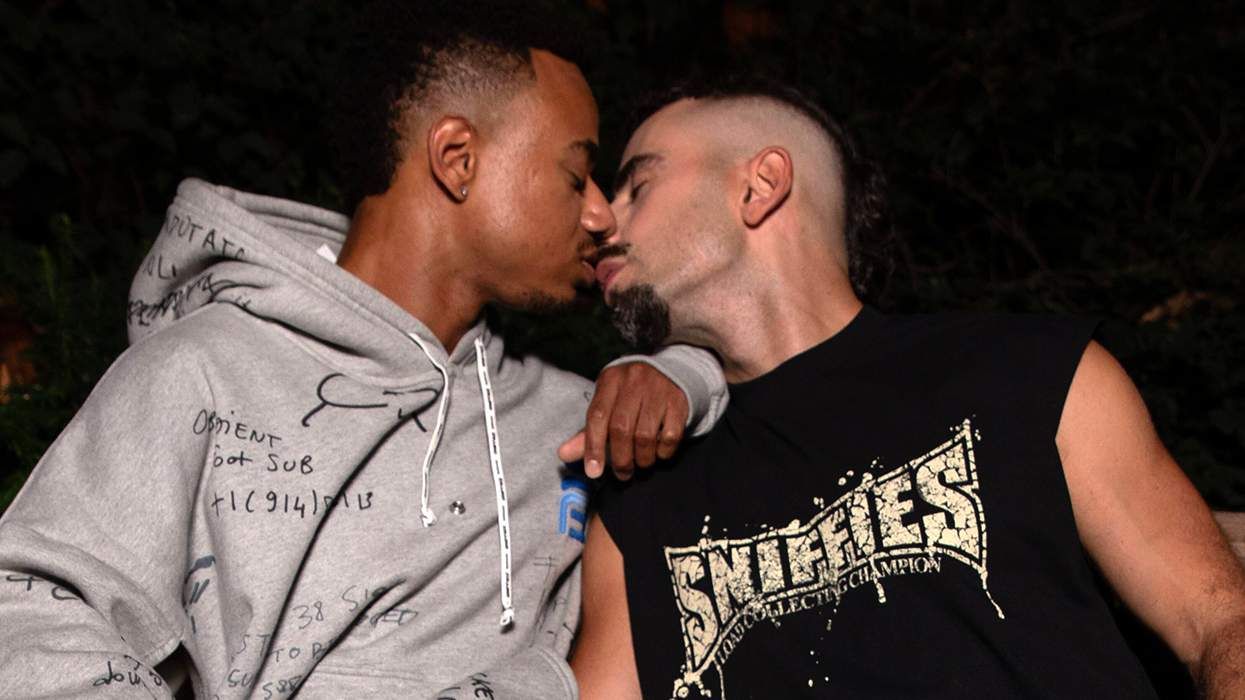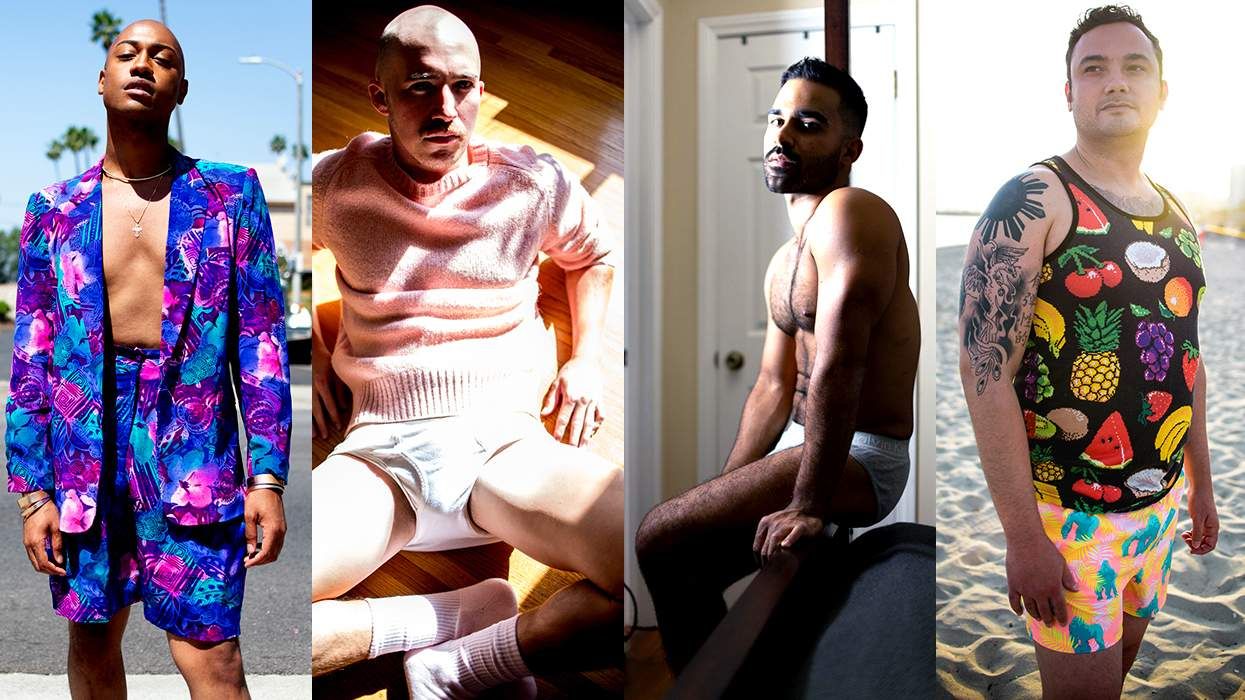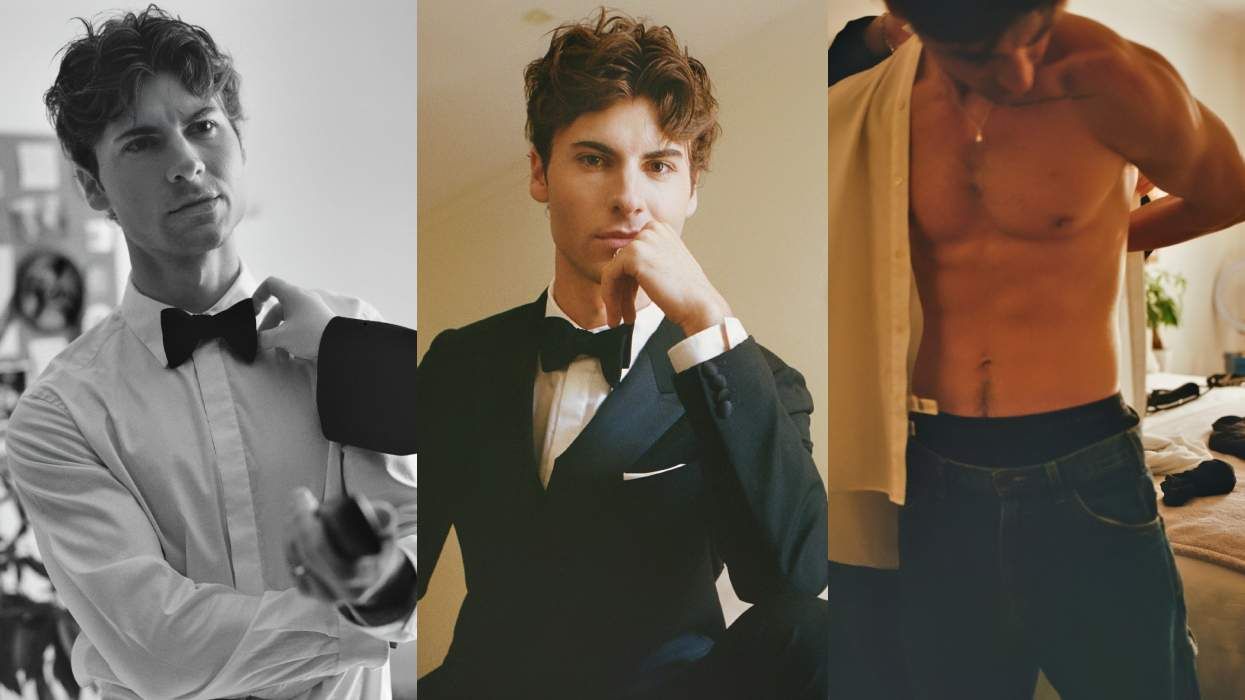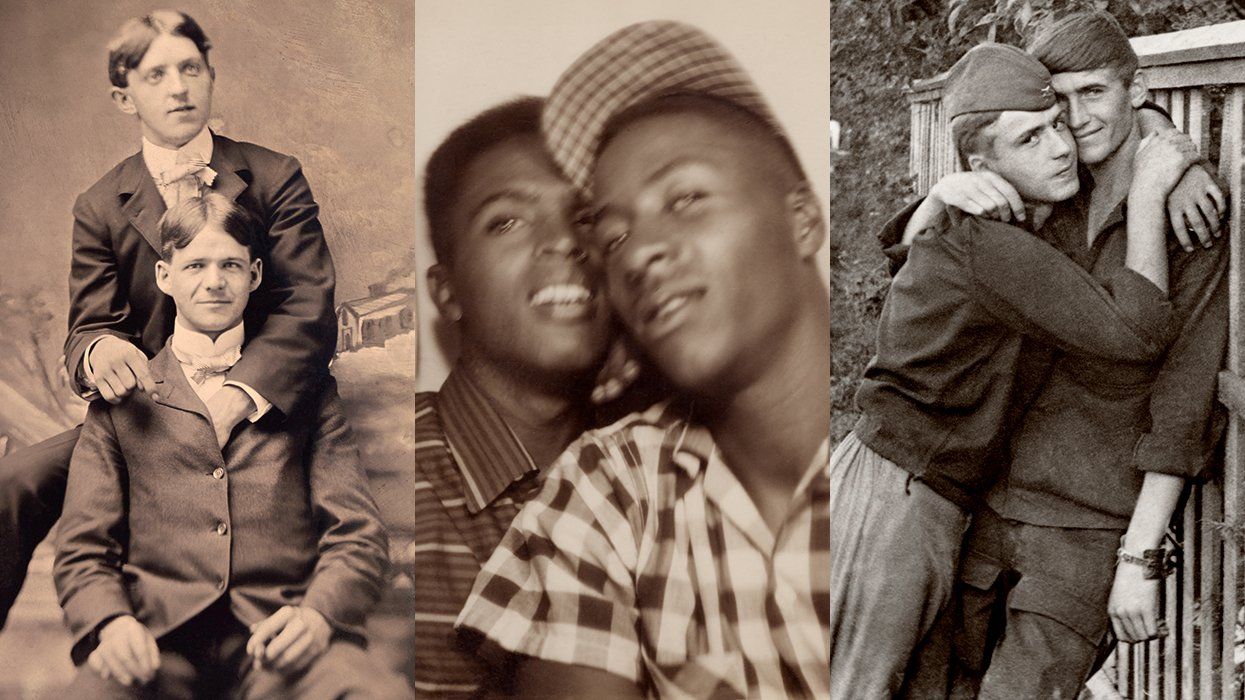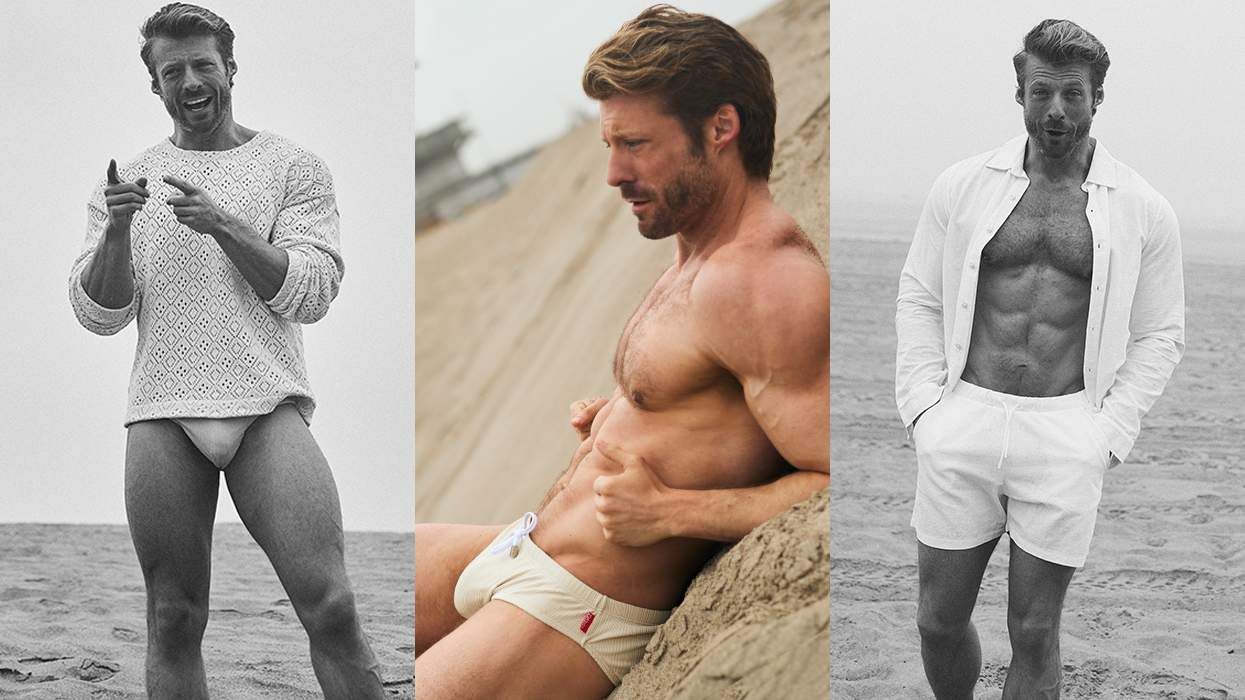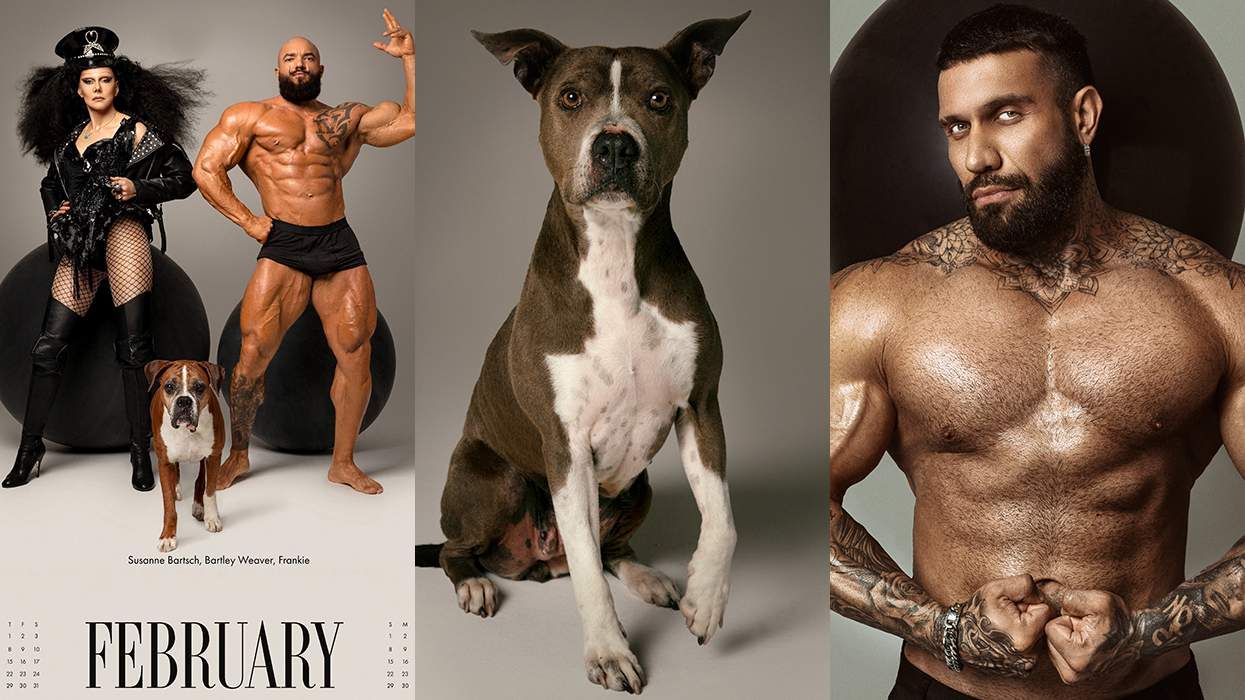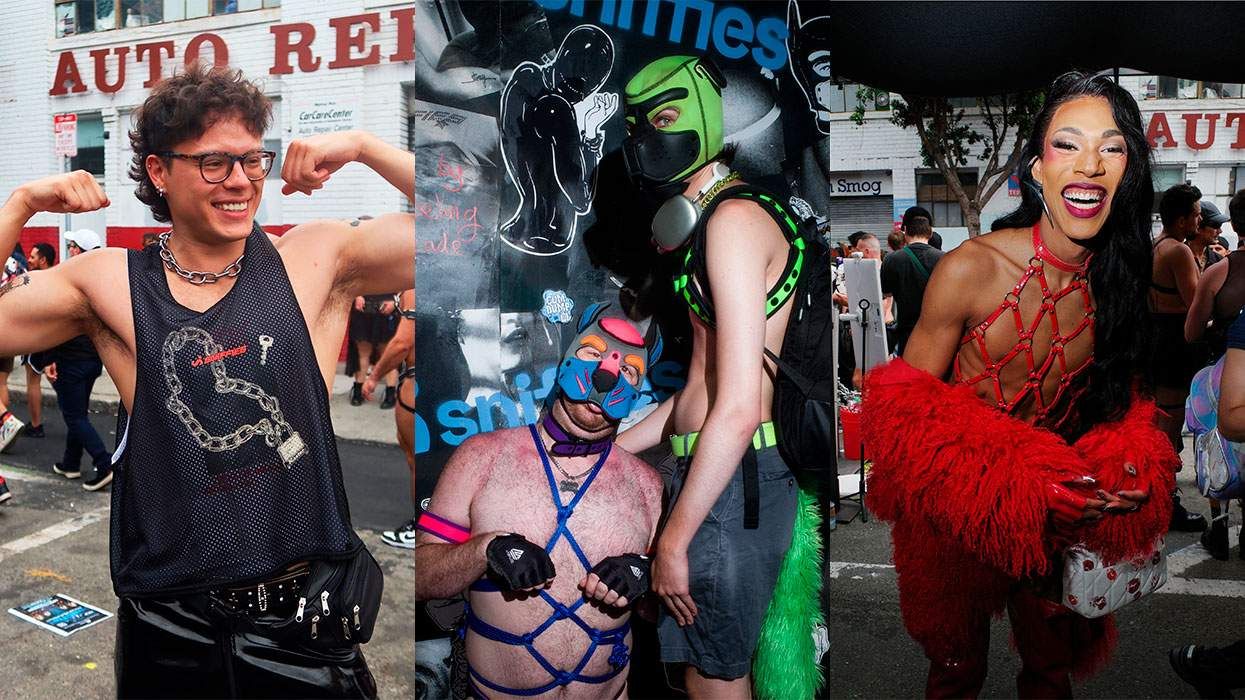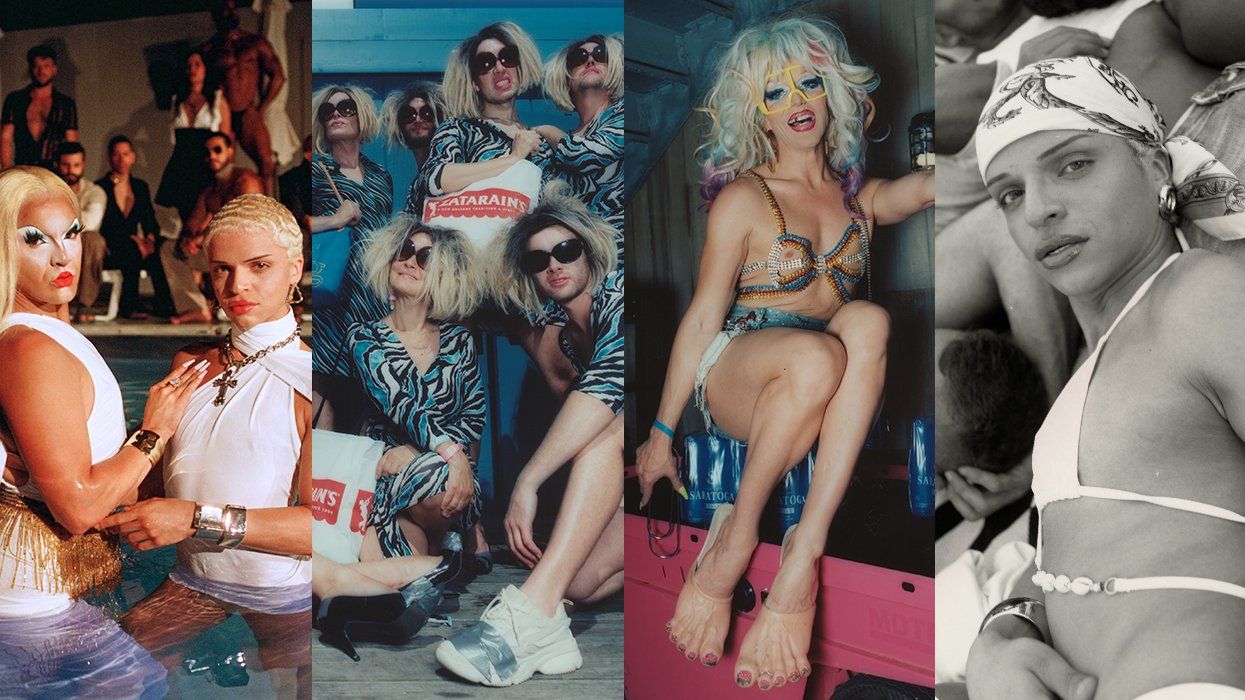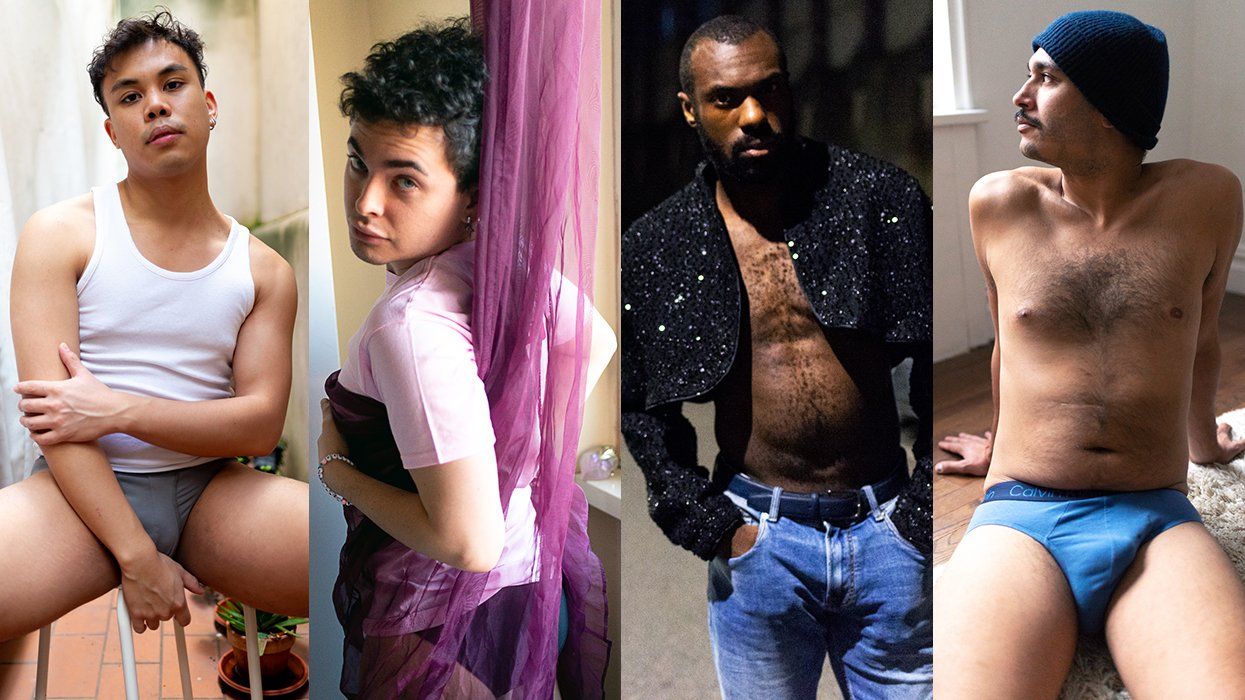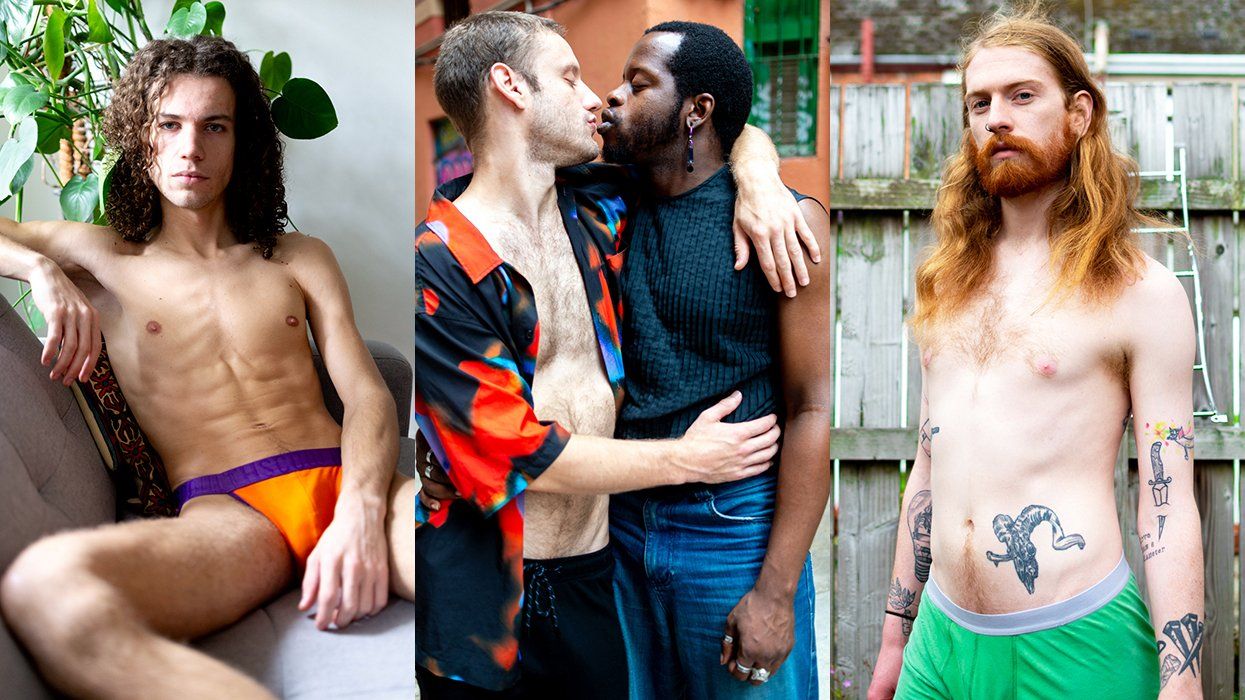Chase Strangio's work is representation. As an attorney with the American Civil Liberties Union, his work involves advocating for his clients -- and by extension their communities -- in and out of court. It's something that he did while lobbying on behalf of whistleblower Chelsea Manning and is continuing to do in the case of Aimee Stephens as one in a trio of pivotal LGBTQ+ employment rights cases currently pending before the Supreme Court.
But as a trans masculine person, Strangio also represents his own community by virtue of his very existence.
In a new project with Google, master photographer Annie Leiobivitz turns the camera and attention onto Strangio himself. Leibovitz shot the lawyer and activist in his home revealing what he calls a "vulnerable" part of himself. Here, we talk to Strangio about being shot by famed photographer, the cis gaze on trans bodies, and trans masculine representation.
Can you tell me a little about this project?
I feel so humbled to be a part of this project that's a partnership between Google and Annie Leibovitz. It takes the work of people who they consider to be changemakers in the world and looks at how we can look at people in the present and what folks are doing as a path toward disruption and change for the future.
It was really exciting for me to have the experience of working with Annie and being able to not just talk about my work but bring my experience as a trans person and the work I do on behalf of trans folks in collaboration with so many trans folks who have been leading for so long, and trying to build that out and raise awareness about what needs to be done.
Were you familiar with Annie's work prior to the project?
I'm very familiar. I represented Chelsea Manning for many years, and when Chelsea got out of prison, we did two big shoots, which was part of Chelsea being able to put her own images out in the world after having been incarcerated for so long. One of the first images that was taken of Chelsea after her incarceration, other than the one she took of herself, was one done by Annie. So I had been part of that as well.
Can you talk to me about the process of the actual shoot? What was important to you and also did you feel like it revealed something about you?
Annie has an unbelievable ability to connect, which is obviously part of why she's able to produce such incredible portraits because if you're making people feel uncomfortable, then you're not going to capture a good image of them. I think there was a real joyful, comfortable way that we engaged, which is maybe perhaps why she drew a part of me out that I didn't necessarily want to see. I live in this tiny studio that is a mess and that I feel a lot of shame about, and I still felt really comfortable inviting her in. That in and of itself shows that I trusted her.
Ultimately, I still am learning how to claim my own sense of my body in images. There's ways in which every time I would have been like, "Oh, I would've done something differently" or said, "Actually I would prefer this," but I'm still learning that about myself, which is part of the privilege of getting to experience things like this is that I get to better understand myself through the process and understand my own limitations. And see the ways that I might be holding myself in the world and then sort of reflect back on that and say, "OK, well, how can I grow and change?"
I think that's part of the beauty of visual narrative is that we can make visible the things that we may not otherwise see, and that gives us more to work with in building out disruptions and change. Because that, to me, is the ultimate goal of my work.
It seems to me that this all has to do with the gaze, and I'm wondering whether you got to collaborate with Annie on how you were viewed and in shaping that gaze for the imagery.
It's always challenging especially for trans folks where like the cis gaze on the trans subject has a long history of being exploitative. So what does it mean to cede that control to someone that you don't know, and are you going to just then see the same tropes of transness being reanimated and internalized? Over time, I've taken a lot of chances -- I have a lot of privilege as a trans person and a lot of access. So if nothing else, my process of being photographed or my process of being commodified in different ways can itself be a lesson, to talk about how the trans subject is created.
This was a really interesting experience to let someone into my home and say, "This is where I exist in private," which feels very vulnerable, and I work really hard to not let any vulnerability be seen. There's something very vulnerable about the image, and so I'm still really struggling with that: What does it mean if there's a vulnerability and a sadness? Is that dangerous in a world that's looking for that in you? But at the same time -- because it comes alongside a video -- I'm able to speak so much that I think that you can sort of draw power from that.
I'm really trying to think of all of the ways over time that we can redefine the trans image, even if it's being captured through the cis gaze, which it always will be consumed by that since the vast majority of audiences are not trans.
Right now you're hypervisible, considering the Supreme Court cases and your work in that, which has, of course, also been amplified by Laverne Cox leveraging her platform to get you even more space. This imagery of a more vulnerable side of you is also coming within that context.
I have a long history of being friends with and working with Laverne, and we've done a bunch of things together. Around the Supreme Court cases, we were incredibly visible, which comes with it so many different things, including a lot of negative attacks. And then, of course, a lot of questions about: "What does it mean?", "Why us?", "Why me?", and "Is it a good use of visibility?"
All visibility comes with a lot of negative. Both in terms of backlash from the community who isn't visible in the big sense that every time you have trans visibility in sort of the macro public dispersive sense, there's backlash against the hypervisible trans subject on the street who never has the agency to control the image of transness but is vulnerable to attack because of the way in which violence is enacted on the trans body -- particularly the Black trans body. There's just a lot of things that we just constantly have to be asking ourselves, and in the production of every narrative, we should be asking, "Was that the right way to do it? Is there a different way to do it?"
The image that's part of this project is like: I'm in my apartment, I look sad almost. And that is a part of me, you know? Obviously, there's a deep sadness that comes with lots of trauma and lots of other things, and so how do you sort of merge those two things and be an authentic, full human being? Because I am a full human being, and I care most about the work and using my experiences to hopefully disrupt our expectations about bodies in general.
There's an ongoing conversation about trans representation and also what some have labeled a lack of trans masculine representation. Over the past two years, I feel like that's been changing, but I'm curious about your thoughts.
This is something that's come up a lot because people have been very hypercritical of the lack of trans masculine representation, and I think in some senses that's true. Particularly I think there are lots of Black trans masculine folks who have really been leaders in the trans movement who maybe we aren't seeing as much. But I think there's two things going on: one is that the reality is that the types of violence that Black trans women and Black trans femme folks experience as well as brown, Indigenous, all trans women and femmes of color experience, necessitates a certain level of centering and disruption, because it's a unique form of transmisogyny, that I think is important to center.
In addition, the reality of how gender operates is that trans masculinity is invisibilized in certain ways for lots of reasons. But one is because the primacy and the centrality of masculinity as the dominant. So there is visible trans masculinity -- it's just not noticed because it's part of the dominant. You don't see that which has more power because we're taught to assume its naturalness. So I do think that it's sort of struggling between that invisibility that comes with power but then also working against erasure, which is destructive.
RELATED | These Hate Groups Want the Supreme Court to Erase Trans People


